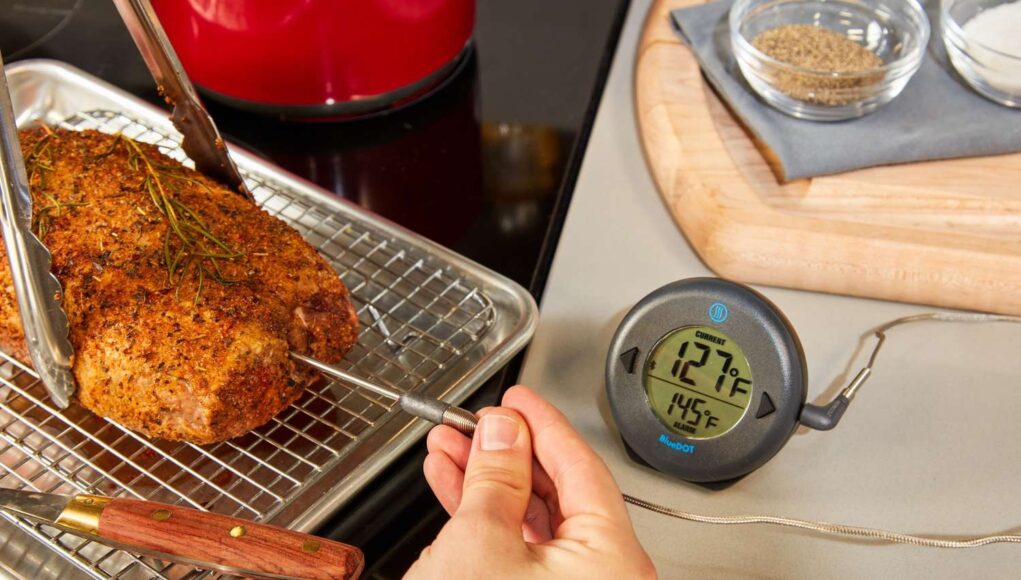Cooking a pork shoulder to perfection can be a delicious and rewarding experience. The key to ensuring that your pork shoulder is cooked safely and tastes terrific is using a meat thermometer. Knowing precisely where to put the meat thermometer in pork shoulder is crucial for achieving the best results. In this article, we will dive into the specifics and give you tremendous tips on how to get it right.

Why Use a Meat Thermometer?
Using a meat thermometer is important for several reasons. First, it ensures that the pork shoulder is cooked to a safe temperature to prevent foodborne illnesses. Additionally, it helps you achieve the desired level of doneness, resulting in a juicier and more flavorful dish.

The Importance of Accurate Temperature Readings
Accurate temperature readings allow for consistent and safe cooking results. This eliminates the guesswork and reduces the risk of undercooking or overcooking your meat, ensuring it is both delicious and safe to eat.

Selecting the Right Meat Thermometer
Choosing the right meat thermometer is crucial for obtaining accurate readings. There are several types of meat thermometers available, including instant-read thermometers, digital probe thermometers, and oven-safe thermometers. Select the one that best suits your cooking style and preferences.
Steps to Correctly Insert the Meat Thermometer
Step 1: Find the Thickest Part
When inserting the meat thermometer into a pork shoulder, it’s important to target the thickest part of the meat. Avoid bone for the most accurate reading.
Step 2: Insert the Thermometer
Carefully insert the thermometer into the thickest part of the pork shoulder, making sure it’s not touching any bones. This guarantees an accurate reading of the meat’s internal temperature.
Step 3: Monitor the Temperature
Keep an eye on the thermometer reading. The ideal internal temperature for a fully cooked pork shoulder is 195F to 205F, though this can vary depending on personal preference.
Common Mistakes to Avoid
One common mistake is inserting the thermometer too close to the bone, which can result in inaccurate temperature readings. Another mistake is not allowing the thermometer enough time to read the correct temperature, leading to misleading results.
Cleaning and Maintaining Your Meat Thermometer
Properly cleaning and maintaining your meat thermometer is essential for ensuring its longevity and accuracy. Clean it after each use with warm, soapy water and store it in a safe place.
The Role of Resting in Temperature Reading
Allowing the pork shoulder to rest after cooking helps redistribute the juices and can affect the temperature reading. Let it rest for about 10-15 minutes after reaching the desired temperature before cutting into it.
Temperature Variations in Different Cooking Methods
Different cooking methods such as roasting, grilling, or smoking may have varied effects on the temperature reading. Adjust your thermometer placement and monitoring practices accordingly to achieve the best results.
Using a Meat Thermometer for Other Meats
Although this article focuses on pork shoulder, the principles of using a meat thermometer apply to other meats as well. Always aim for the thickest part and avoid bones for the most accurate reading.
Recommended Brands and Models
There are several reliable brands and models of meat thermometers available. Some of the top-rated options include ThermoPro, Weber, and Taylor. Investing in a high-quality thermometer can significantly improve your cooking results.
Cooking Techniques for a Perfect Pork Shoulder
In addition to using a meat thermometer, mastering various cooking techniques can help you achieve a perfect pork shoulder. Some popular methods include slow roasting, smoking, and braising.
External Tips and Recommendations
If you want to learn more about using meat thermometers, you can visit this guide for additional tips and recommendations.
FAQ
Where should I place the meat thermometer in a pork shoulder?
Place the thermometer in the thickest part of the meat, avoiding any bones for the most accurate reading.
What should the internal temperature of a cooked pork shoulder be?
The recommended internal temperature for a fully cooked pork shoulder is between 195F to 205F.
Can I use a meat thermometer for other types of meat?
Yes, the principles of using a meat thermometer apply to other meats as well. Aim for the thickest part and avoid bones for accurate readings.
For additional cooking tips and methods, you can check out articles on microwave rotisserie chicken, pair with rotisserie chicken, cook on a griddle and season a cast-iron griddle.
As an Amazon Associate, I earn from qualifying purchases.









